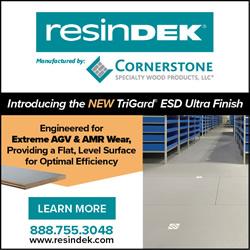The accounting balance sheet tells you how much a business has invested in assets, but it doesn’t tell you how wisely it has invested.
Decoding Business Valuation: What Manufacturers Need to Know (Part 2)
Chuck Faunce | Gorfine, Schiller & Gardyn
In part two of this article series, we highlight what valuation tells you that accounting does not. Part one can be read here.
Valuations Tell You Things That Accounting Does Not
The accounting balance sheet tells you how much a business has invested in assets, but it doesn’t tell you how wisely it has invested. The accounting income and cash flow statements tell you what the periodic return on that investment is, but they don’t tell you whether that return is sufficient. A bad year doesn’t necessarily mean a business’ value is lacking, and a good year doesn’t necessarily mean it has a high value.
A valuation, on the other hand, tells you how wisely a business has invested and whether its return on investment is sufficient by measuring the assets a business has created. These assets are largely referred to as “goodwill.”
Business valuations achieve this by analyzing risk and reward – the reward being the amount of cash a business generates for its owners in the future, and the risk being the uncertainty of exactly how much, and how fast. A manufacturing business could make more or less than expected, sooner or later than anticipated. A business valuation considers how buyers and sellers might look at those two issues to come to an agreement about a single present value to exchange for all of those uncertain future amounts.
The omission of this information from the accounting financial statements is significant because it represents most of the value of most operating companies. For instance, if you add up the balance sheets for the companies in the S&P 500 and compare that to their combined stock market value, the stock market is telling you that more than 80 percent of these companies’ assets aren’t on their balance sheets.
In addition to the importance of understanding this information in the context of a sale, it also has the potential to help owners manage their manufacturing businesses by understanding not just the total amount of goodwill, but also what the goodwill includes, which could be assets like brands, customer relationships and proprietary technology.
Measuring the value of these assets requires making projections about how the business will do in the future – information that cannot be found on the historical financial statements. The benefit to management is that making these projections forces them to consider how best to manage the value drivers for these assets.
Stay tuned for part three of this four-part series, where we discuss the valuation process, and offer an analysis of factors inside and outside of the business.
About Chuck Faunce
.JPG)
The content & opinions in this article are the author’s and do not necessarily represent the views of ManufacturingTomorrow
Comments (0)
This post does not have any comments. Be the first to leave a comment below.
Featured Product

